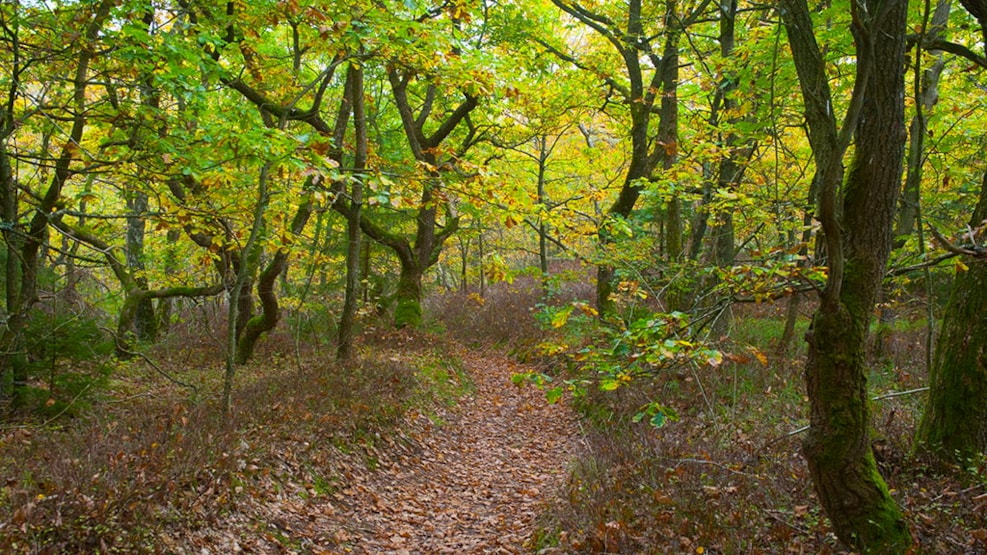
Alheden forest by Hærvejen road
Alheden Skov is a collective term for the Havredal, Stendal and Ulvedal Plantations, which are located along Jutland's old main road Hærvejen not far from the historic city of Viborg. The scenic area offers cosy forests and steep cliffs for socialising.
Alheden Forest offers many fantastic experiences - both historical and wonderful nature experiences. Stendal Plantage is the oldest of the plantations, which was established on land from the local Potato German colonies along the Jutland Ridge in a large-scale afforestation in the years 1788 to 1856.
Here you will see and experience beautiful old winding oaks, burial mounds from both the Stone Age and the Bronze Age, traces of the Potato Germans, historical trails dating back to the Napoleonic Wars and even visit the secret hiding place of the Jutland Robin Hood.
1. The old wolf pit
In Alheden Forest there is an old wolf pit at Ulvegravsvej, where wolves were trapped in the 1700s. A dead goose was used as bait in a deep hollow covered with rafters and branches. Place names like Ulvedal and Ulvedalsvej remind us of the forest's wolf history.
2. Burial mounds
Alheden Forest is filled with burial mounds, most of which are found in Havredal Plantage. Take a hike and get a good overview of the many mounds that lie in a straight line from north to south. The vegetation around the mounds has been removed to give a clear impression of the area's ancient monuments.
3. Jens Langkniv's cave
Jens Langkniv, the Jutlandic Robin Hood, used the long barrow in Ulvedal Plantation as a hiding place. The dyke, from the Neolithic period, is 36 metres long and 7.5 metres wide and contains two small chambers. Jens Langkniv's civil name was Jens Olesen, and he was outlawed for killing a crossguard.
4. Memorial stone to transfer master G. W. Brüel
Georg Wilhelm Brüel led the planting of Alheden Kongeskov in 1788. He was a legendary forest inspector, educated in Hanover. A memorial stone for Brüel was erected in 1929 at Jagtjunkervej.
5. the plantation's first dyke
Alheden's first dike was built in 1789 to protect the newly planted trees. This sand and turf dike can still be seen at Jagtjunkervej.
6. Stendalgaard
Stendalgård, built for the Potato Germans in 1769, later became a forester's residence. The first forester was Chr. Fr. Heuser, employed by G.W. Brüel. The original farm burned down in 1886.
7. Stendalen
Stendalen in Alheden Forest was formed by meltwater during the Ice Age. The Norwegian Trail, dug by Danish prisoners of war during the Napoleonic Wars, runs here. The path was used recreationally, showing the value of the forest beyond timber production.
8. The old oak trees
At Stendalgaard, old oak trees stand along an earth dyke. These trees were planted when the plantation was established and are known for their twisted appearance.
9. Great Standing Mound
Store Ståhøj, a Bronze Age mound, is located at Havredalhus in Alheden Forest. Before the plantation was established, the burial mounds served as signposts and possible gathering places for cattle.
Read more and see the locations on a map.
Hike through Ulvedal Plantation
Take an adventure through Ulvedal Plantation, a scenic 7 kilometre hiking route close to the Hærvejen road that takes you through a varied mix of forest, lakes, meadows and bogs. Here you can experience fantastic nature and also pass the longhouse where the Jutlandic Robin Hood, Jens Langkniv, lived.